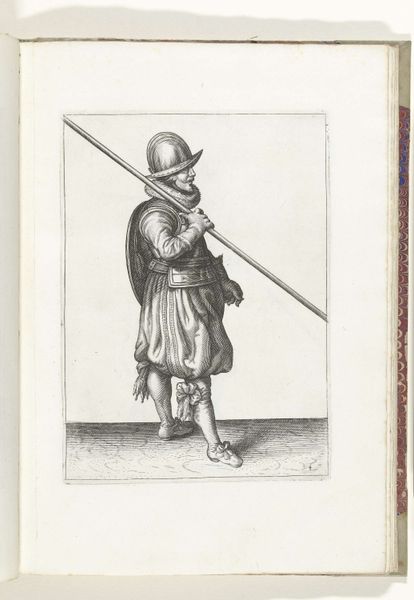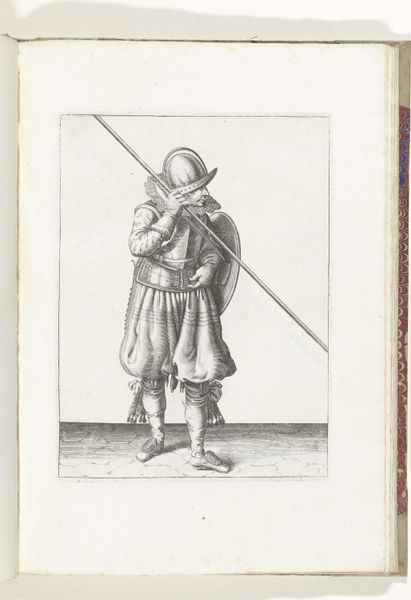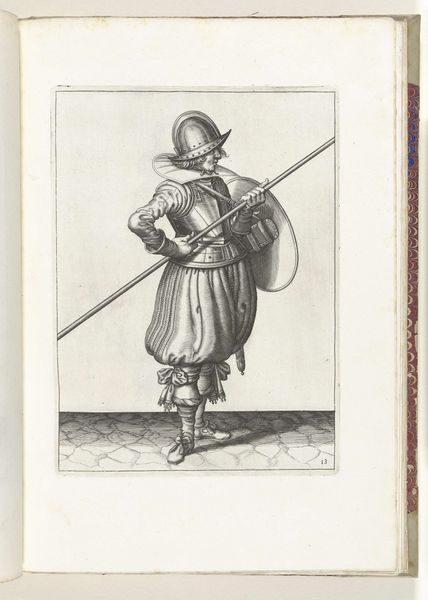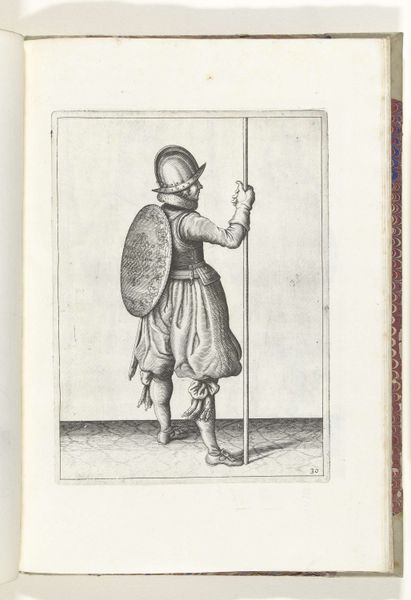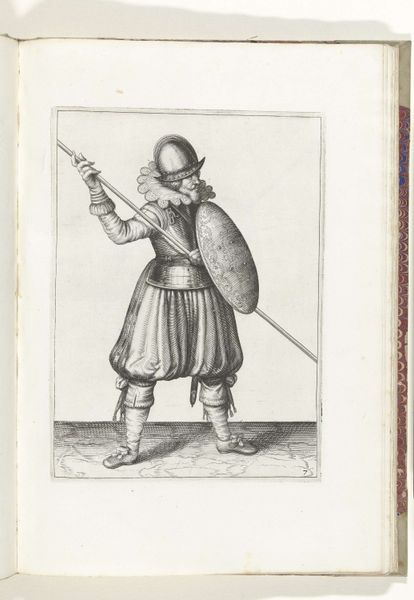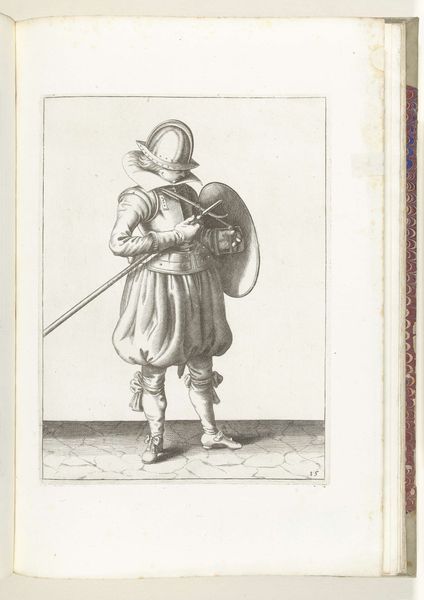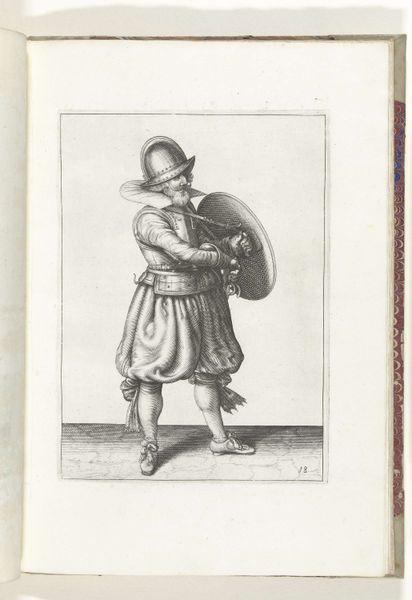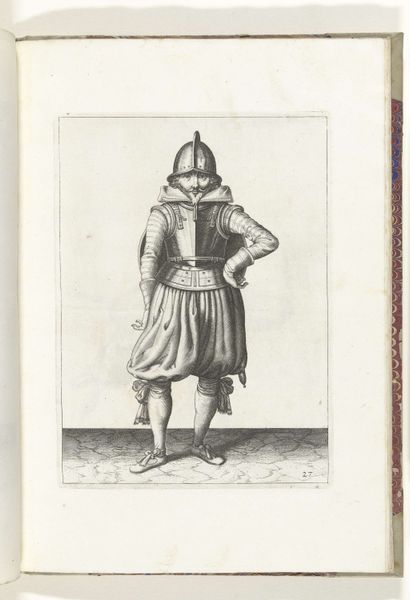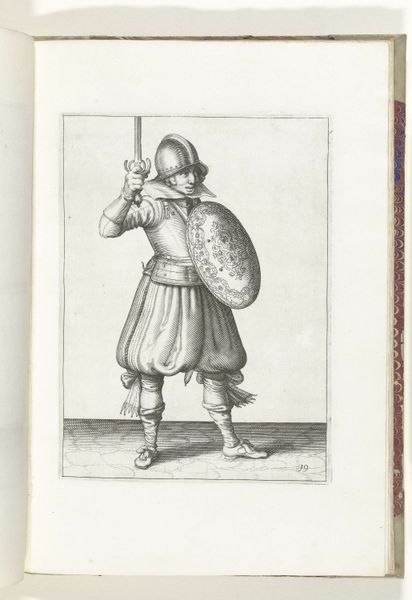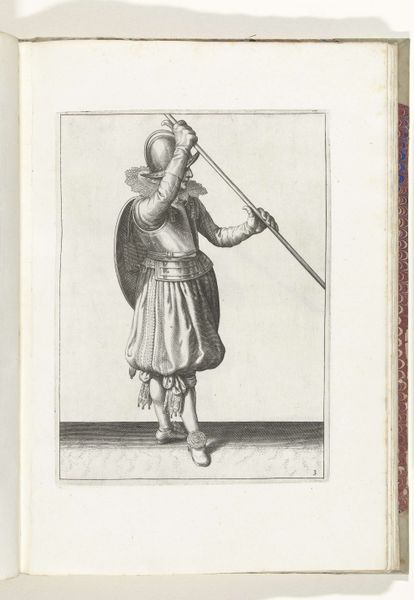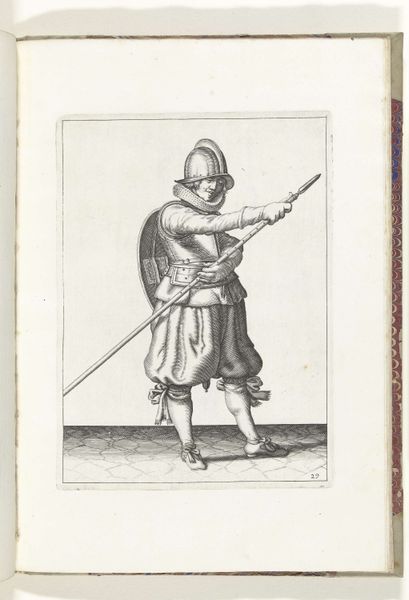
De exercitie met schild en spies: de soldaat houdt het schild met de linkerhand vóór het lichaam (nr. 6), 1618 1616 - 1618
0:00
0:00
drawing, paper, ink
#
portrait
#
drawing
#
weapon
#
baroque
#
pencil sketch
#
paper
#
ink
#
genre-painting
#
history-painting
Dimensions: height 260 mm, width 190 mm
Copyright: Rijks Museum: Open Domain
Curator: Let's turn our attention to "De exercitie met schild en spies: de soldaat houdt het schild met de linkerhand v\u00f3\u00f3r het lichaam (nr. 6)," an ink and paper drawing by Adam van Breen, created between 1616 and 1618. What strikes you about this image? Editor: There’s a quiet strength in this piece. It feels very matter-of-fact. Almost like a training manual page, but there's something more elegant, almost vulnerable in how the light touches his gear. I imagine him pausing for a brief second, wondering why he has to hold the shield like that again. Curator: Indeed. It's part of a larger series that showcases military exercises, meant to standardize training practices during a period of intense military reform and conflict. This particular pose would demonstrate a common defensive posture, shielding the body while preparing to strike with the spear. Editor: Ah, the banality of battle preparation! What resonates is the ordinariness of this image – how often we forget all the little steps of repetitive action involved when discussing historic battles. The meticulous details van Breen put in his clothes, especially those baggy pants – were they stylish at the time or standard military attire? Curator: A bit of both, I'd say. Clothing served a practical function, but sumptuary laws and social hierarchies also dictated attire, so there would have been variations based on rank and wealth. In a drawing like this, the rendering becomes as much about documentation as it is about social identity and hierarchy. Van Breen wasn't just documenting military positions; he was capturing the visual markers of social identity in that era. Editor: That's interesting; the man himself seems sort of generic, face obscured in shadow, but you're right; the attire almost places him. It brings up interesting questions on the artist’s intent. Curator: That’s right. These sorts of drawings are an invitation for the audience to observe closely how power was both embodied and performed within early modern society, which ties the micro of individual performance to the macro level of early modern geopolitics. Editor: Beautifully put. For me, it makes you think how heavy that shield probably felt and wonder what the soldier felt knowing that one move could be the one to keep you alive or not. It grounds the experience somehow. Curator: I agree. We can think about art in connection with social constructs, yet also on the level of personal humanity that touches us all. Editor: Indeed. Let’s leave our listeners to contemplate that intersection as they move along.
Comments
No comments
Be the first to comment and join the conversation on the ultimate creative platform.
